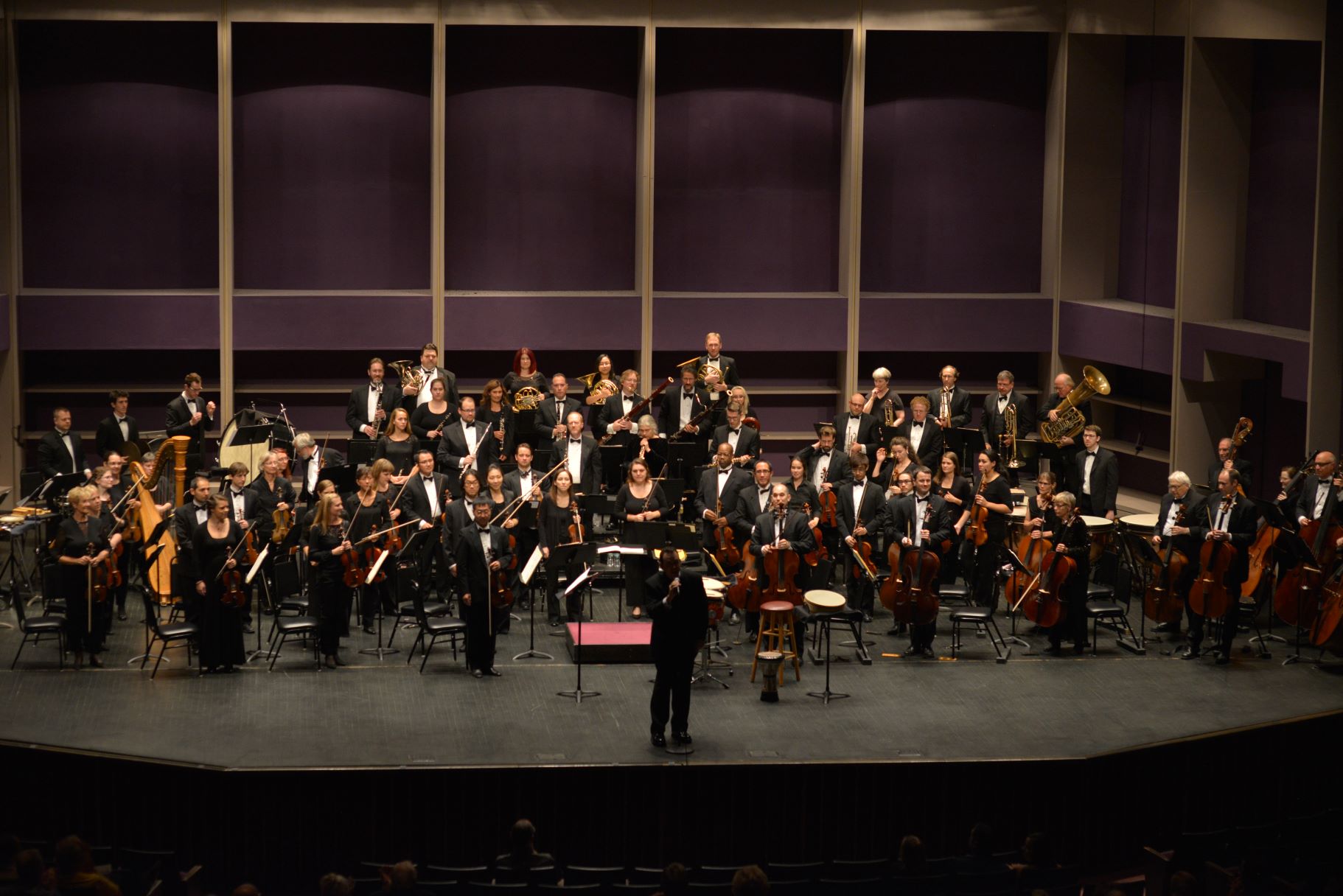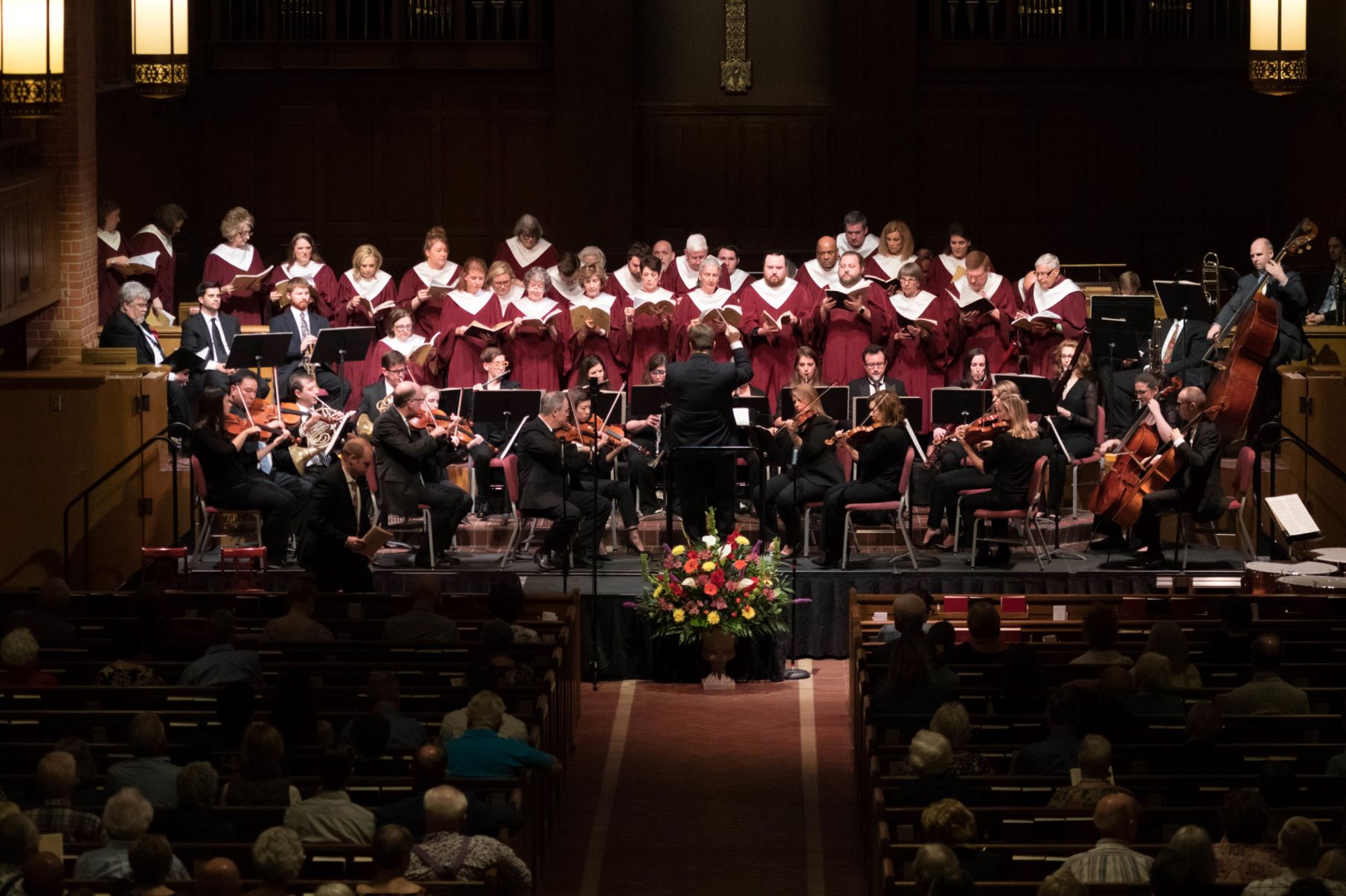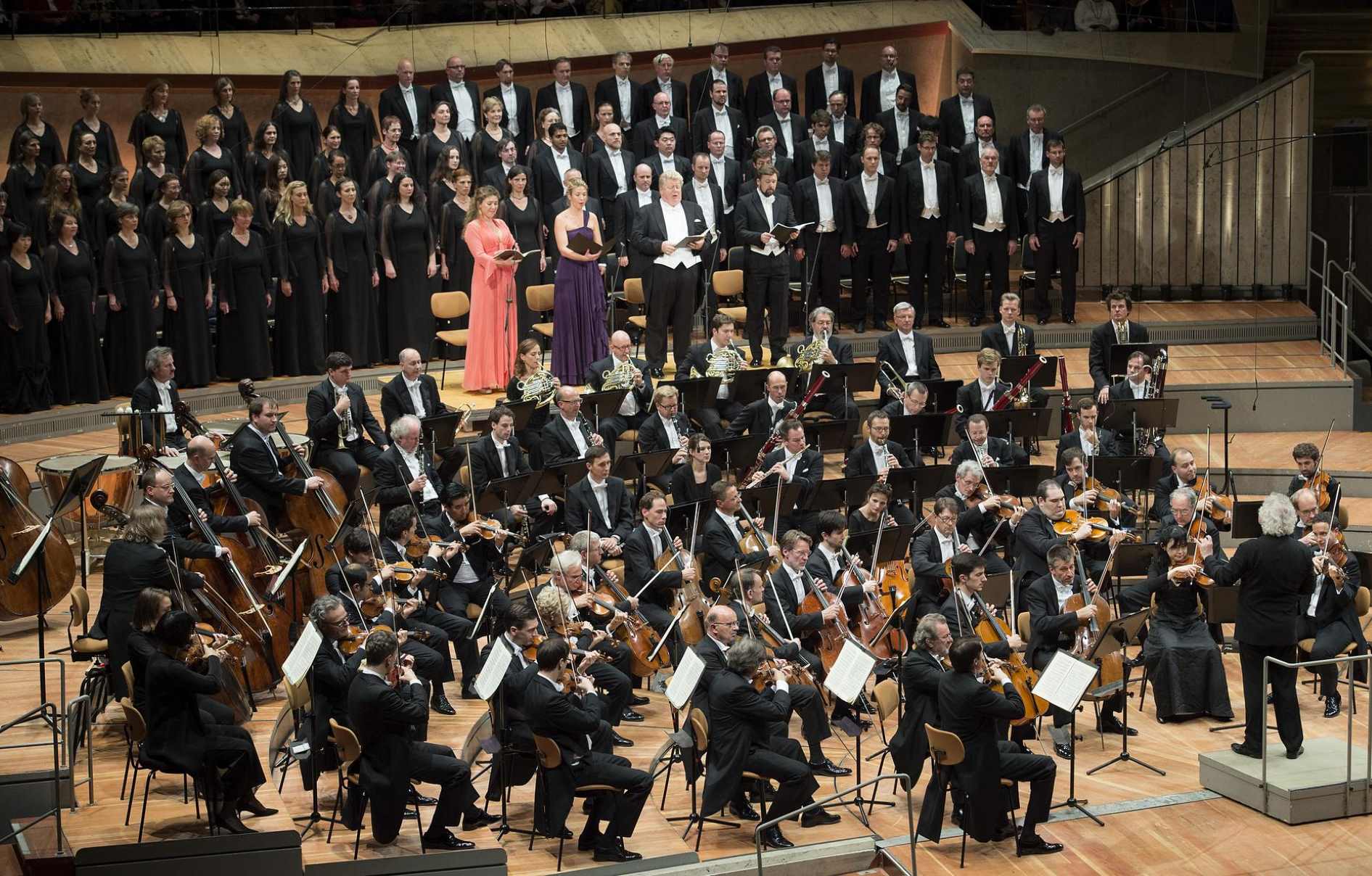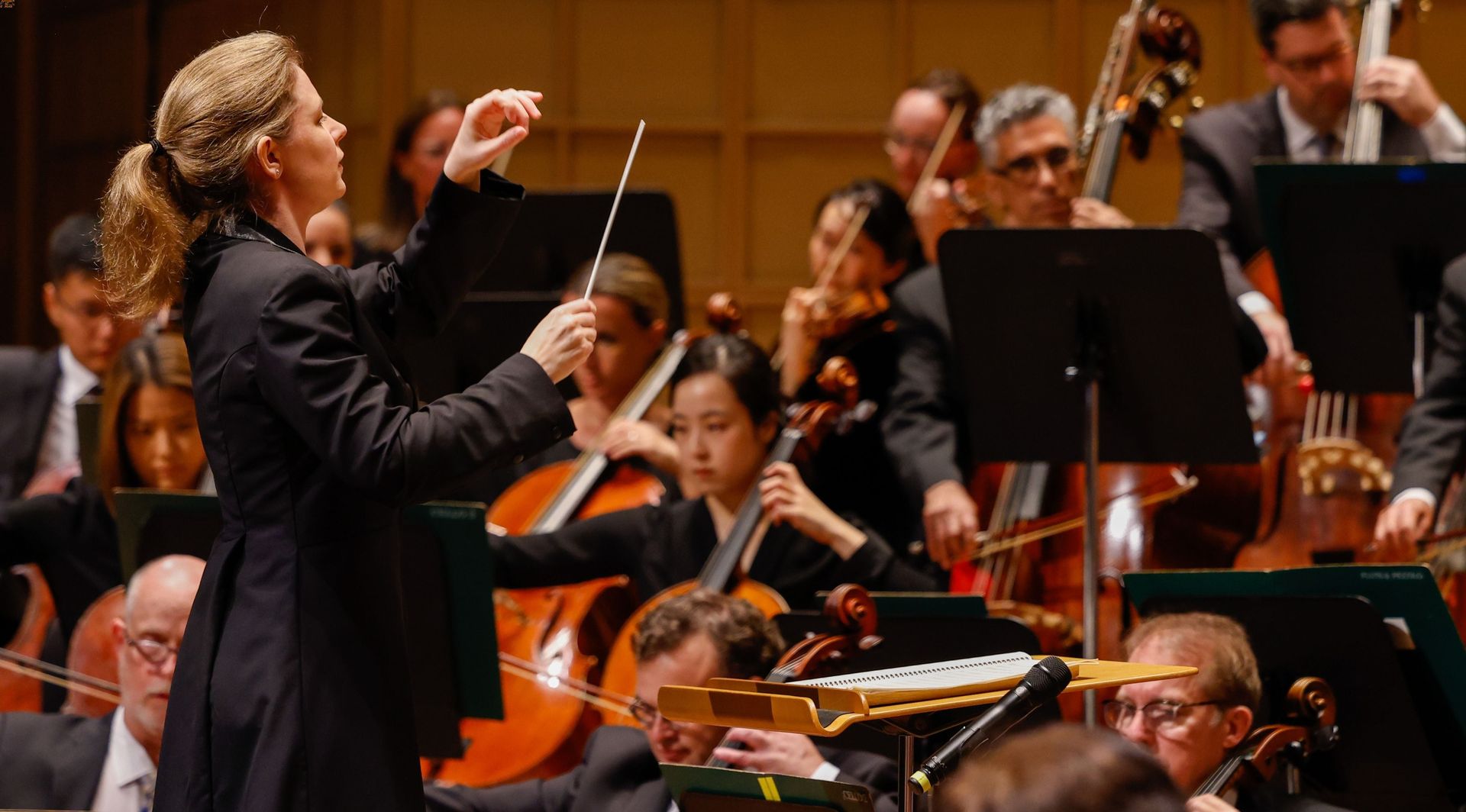Home>Genres>Symphony>How Does A Symphony Orchestra Differ From A Concert Band?
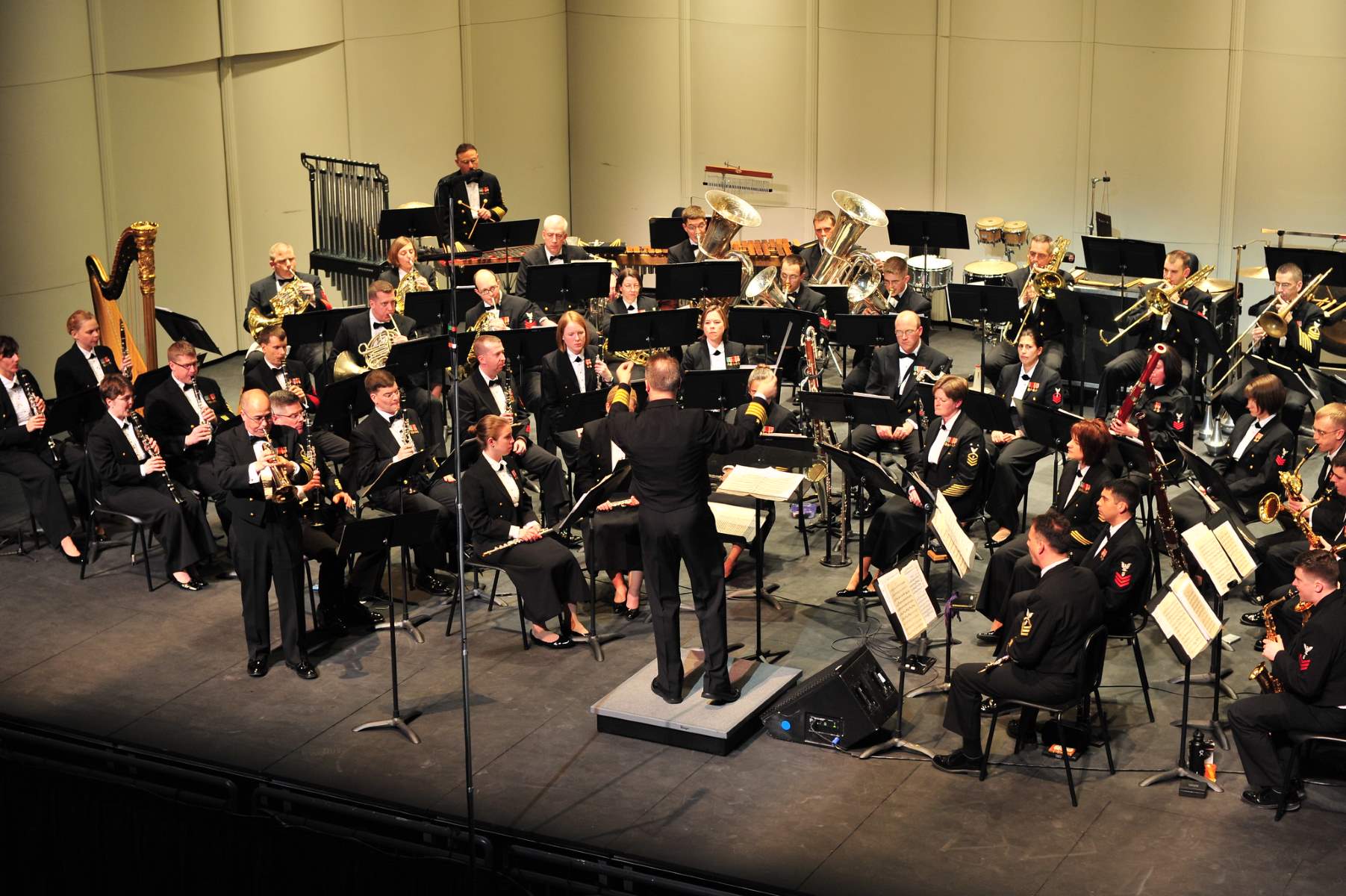

Symphony
How Does A Symphony Orchestra Differ From A Concert Band?
Modified: January 22, 2024
Discover the key differences between a symphony orchestra and a concert band, exploring the unique characteristics and diverse musical offerings of these ensembles.
(Many of the links in this article redirect to a specific reviewed product. Your purchase of these products through affiliate links helps to generate commission for AudioLover.com, at no extra cost. Learn more)
Table of Contents
Introduction
When it comes to instrumental ensembles in the realm of classical music, two of the most prominent groups that often come to mind are the symphony orchestra and the concert band. While both share similarities in terms of their instrumental lineup and purpose of creating beautiful music, there are some key differences that set them apart. Understanding these differences can enhance one’s appreciation for the diverse range of musical performances.
A symphony orchestra is renowned for its grandeur and richness of sound. It typically consists of a large number of musicians, making it one of the most substantial instrumental ensembles. On the other hand, a concert band, also known as a wind ensemble, is typically a smaller group that emphasizes wind and brass instruments. Though both groups perform a wide range of repertoire, the nature of their instrumentation, performance style, and overall structure distinguishes them.
In this article, we will explore the key differences between a symphony orchestra and a concert band, shedding light on their size and structure, instrumentation, repertoire, performance style, leadership and conducting, as well as the venue and setting in which they perform. By delving into these aspects, we can gain a deeper understanding of the unique qualities that make each ensemble special in its own right.
Size and Structure
One of the primary differences between a symphony orchestra and a concert band lies in their size and structure. Symphony orchestras tend to be much larger and more expansive in terms of membership compared to concert bands. A symphony orchestra can comprise anywhere from 70 to over 100 musicians, depending on the specific repertoire and requirements of the performance. This large size allows for a broad range of expressive possibilities and the ability to tackle complex works with multiple instrumental layers.
Concert bands, on the other hand, are generally smaller in scale. A typical concert band may consist of around 40 to 60 musicians, although the number can vary depending on the specific composition and performance needs. The smaller size of a concert band allows for greater precision and cohesion in the ensemble, enabling the musicians to closely interact and respond to each other’s musical nuances.
Furthermore, the structure and seating arrangement of the two ensembles differ. In a symphony orchestra, the musicians are arranged in sections according to instrument groups, such as strings, woodwinds, brass, and percussion. Each section is led by a principal player who serves as the leader and representative for that specific group. The sections are positioned in a hierarchical manner, with the string section typically occupying the front and center of the stage due to their prominence in most symphonic works.
Concert bands, on the other hand, have a more egalitarian seating arrangement. The musicians are often organized by instrument families, such as woodwinds, brass, and percussion, with each group having equal importance in the overall sound. The absence of a central hierarchy allows for a more balanced distribution of musical responsibility among the musicians, fostering a sense of collaboration and ensemble cohesion.
Overall, while both symphony orchestras and concert bands follow a similar structure with sections and seating arrangements, the size and organizational dynamics of each ensemble contribute to the distinct musical experience they offer.
Instrumentation
The differences in instrumentation between a symphony orchestra and a concert band play a crucial role in shaping their sound and repertoire. Symphony orchestras have a vast array of instruments at their disposal, allowing for a rich and diverse sonic palette. The typical symphony orchestra consists of four main sections: strings, woodwinds, brass, and percussion.
The string section forms the backbone of the orchestra, consisting of instruments such as violins, violas, cellos, and double basses. These instruments produce a warm and resonant sound, creating the foundation upon which the rest of the ensemble builds. Woodwinds include instruments like flutes, clarinets, oboes, and bassoons, which add color and texture to the orchestral sound. Brass instruments, including trumpets, horns, trombones, and tubas, bring power, brilliance, and majestic fanfare. Finally, the percussion section adds depth and rhythm, incorporating instruments like timpani, snare drums, cymbals, and various other percussive elements.
Concert bands, on the other hand, focus primarily on wind and brass instruments. This includes instruments such as flutes, clarinets, saxophones, trumpets, trombones, tubas, and various types of percussion instruments. Due to the absence of a substantial string section, concert bands rely on the wind and brass instruments to create a full and vibrant sound. The lack of strings in concert bands gives them a distinctive timbral quality that is different from symphony orchestras.
Furthermore, concert bands often feature a wider variety of auxiliary instruments compared to symphony orchestras. These may include instruments like piccolos, bass clarinets, alto saxophones, euphoniums, and additional percussion instruments. These auxiliary instruments contribute to the versatility and flexibility of concert bands in performing different styles and genres of music.
Overall, while both symphony orchestras and concert bands share some common instrument families, it is the emphasis on strings in orchestras and the focus on winds and brass in concert bands that differentiate their respective sound and overall instrumental makeup.
Repertoire
The repertoire performed by a symphony orchestra and a concert band often varies in terms of style, genre, and historical context. Symphony orchestras have a wide-ranging repertoire that encompasses music from various periods, including Baroque, Classical, Romantic, and contemporary compositions. They are known for their performances of symphonies, concertos, overtures, and other large-scale works. The symphony orchestra repertoire includes renowned composers such as Beethoven, Mozart, Tchaikovsky, and Mahler, among others.
Concert bands, on the other hand, have their own unique repertoire. While they also perform some transcriptions of symphonic works, concert bands are primarily associated with music specifically composed for wind ensembles. Their repertoire includes marches, symphonic wind compositions, suites, and other original works for wind instruments. Notable composers in the concert band repertoire include Gustav Holst, Percy Grainger, John Philip Sousa, and Alfred Reed.
In addition to these core genres, both symphony orchestras and concert bands explore contemporary and experimental music. Symphony orchestras often collaborate with contemporary composers and perform works that push boundaries and incorporate unconventional elements. Concert bands also engage in commissioning new compositions and showcasing the work of contemporary wind ensemble composers.
Both ensembles also embrace crossover repertoire, incorporating popular music, film scores, and arrangements of modern songs into their performances. This allows them to reach a broader audience and diversify their programming.
Ultimately, the repertoire of symphony orchestras and concert bands reflects their respective traditions, historical context, and the unique sonic possibilities offered by their instrumentation. Whether performing classical masterpieces or contemporary compositions, both ensembles offer a rich and varied musical experience.
Performance Style
The performance style of a symphony orchestra and a concert band can differ in various aspects, including dynamics, articulation, and overall interpretation. Symphony orchestras are known for their nuanced and expressive playing, with a focus on blending the different sections and achieving a seamless, unified sound. The conductor plays a crucial role in shaping the performance, guiding the musicians through his or her interpretation of the music. The orchestra aims to create a dynamic range that spans from delicate pianissimos to powerful fortissimos, showcasing the full capabilities of the instruments.
Concert bands, on the other hand, have a distinct performance style shaped by the characteristics of wind and brass instruments. They often prioritize clarity and precision, emphasizing the distinctive timbres and colors that these instruments can produce. Concert bands excel at producing articulate and crisp sounds, highlighting the intricate melodies and precise rhythmic patterns found in their repertoire.
Another difference in performance style lies in the level of vibrato used by the musicians. Symphony orchestra string players often employ vibrato, a technique that adds warmth and richness to the sound. Conversely, concert band wind players typically utilize limited or no vibrato, allowing for clear and focused tones in their performances.
Furthermore, the role of the conductor in each ensemble varies. In a symphony orchestra, the conductor’s leadership is paramount, with their gestures and interpretations guiding the entire ensemble. The conductor has the responsibility of maintaining balance, shaping musical phrases, and ensuring precision in both the individual sections and the overall performance. In contrast, concert bands may be conducted by a conductor, but they also have a more democratic approach that allows for increased input and collaboration among the musicians.
Overall, while both symphony orchestras and concert bands strive for excellence in their performances, their different instrumental characteristics and interpretive styles contribute to unique and distinguishable performance experiences.
Leadership and Conducting
Leadership and conducting play a crucial role in both symphony orchestras and concert bands, but the dynamics and roles of conductors differ between the two ensembles. In a symphony orchestra, the conductor holds a central position of authority and leadership. The conductor’s role is to interpret the music, set the tempo, shape the dynamics, and guide the musicians to create a unified and cohesive performance. They have the responsibility of conveying their artistic vision and ensuring that the ensemble delivers an engaging and expressive musical experience. The conductor’s gestures and cues communicate the desired musical interpretation to the musicians, allowing for a synchronized and synchronized performance.
In concert bands, the role of the conductor may differ. While some concert bands also have a conductor who serves as the musical leader, some bands adopt a more decentralized approach to leadership. In these cases, the conductor may act more as a facilitator, guiding the ensemble during rehearsals and performances, but allowing the musicians to have a larger role in shaping the musical interpretation. This collaborative approach encourages greater interaction among the musicians and fosters a collective sense of ownership over the ensemble’s artistic direction.
Additionally, in concert bands, section leaders often play a significant role in shaping the performance. These individuals, often selected from within the ensemble, provide guidance and act as representatives of their respective sections. They work closely with the conductor and contribute to the overall cohesion of the ensemble by helping to maintain balance, accuracy, and unity within their sections. The collaborative leadership style in concert bands promotes a cooperative and democratic atmosphere, where each musician plays a vital role in the success of the ensemble.
Ultimately, while both symphony orchestras and concert bands benefit from strong leadership and conducting, the different approaches to the roles of conductors and the involvement of section leaders contribute to the unique dynamics and artistic direction of each ensemble.
Venue and Setting
The venue and setting in which symphony orchestras and concert bands perform are significant factors that contribute to the overall experience and ambiance of their concerts. Symphony orchestras often perform in large concert halls that are specifically designed to accommodate the size and acoustic requirements of such ensembles. These concert halls are meticulously designed to enhance the sound projection and clarity, ensuring that every note played by the orchestra reaches the audience with precision and richness. The grandeur and elegance of these venues add to the sense of occasion and formality associated with symphony orchestra performances.
Concert bands, on the other hand, can perform in a variety of settings, ranging from traditional concert halls to outdoor venues and bandstands. The versatility of concert bands allows them to adapt to different performance spaces, making them well-suited for outdoor concerts, community events, and less formal settings. Outdoor performances often create a more relaxed and festive ambiance, allowing the audience to enjoy the music in a casual and social atmosphere. The open-air setting also offers a different acoustical experience, with the natural environment affecting the sound and resonance of the instruments.
The seating arrangement for audiences attending symphony orchestra performances is traditionally formal, with attendees seated in designated areas and rows. The focus is on the stage, with the performers commanding the attention of the audience. Concert-goers often dress more formally for these events, adding to the sense of occasion and respect for the music being performed.
Concert band performances, on the other hand, have a more relaxed seating arrangement in many cases. Outdoor concerts may allow for lawn seating, where audience members can bring blankets or chairs and create a more casual atmosphere. In community settings, audiences may be encouraged to interact with the musicians, participate in sing-alongs, or engage in other forms of audience interaction that foster a sense of community and camaraderie.
Regardless of the venue and setting, both symphony orchestras and concert bands strive to create an immersive and captivating musical experience for their audiences, making use of the distinct qualities of their respective performance spaces to enhance the overall impact of their performances.
Conclusion
In conclusion, symphony orchestras and concert bands are two distinct instrumental ensembles that offer unique musical experiences. From their size and structure to their instrumentation, repertoire, performance style, leadership, and the venues in which they perform, each ensemble possesses its own set of characteristics that set them apart.
A symphony orchestra, with its large size, diverse instrumentation, and rich repertoire, creates a grand and majestic sound. Its performance style places emphasis on unity, expressiveness, and dynamics, led by a conductor who guides the musicians and shapes the interpretation of the music. Symphony orchestras excel in performing symphonic works from various periods, showcasing the intricate layers and nuances of the compositions.
Concert bands, on the other hand, have a more intimate and focused sound, primarily driven by wind and brass instruments. Their repertoire includes original compositions and transcriptions specifically written for wind ensembles, showcasing the unique timbral qualities of these instruments. Concert bands often have a more collaborative approach to leadership, allowing for greater involvement and input from the musicians themselves.
Both ensembles offer captivating performances in their own right, catering to different musical tastes and preferences. Symphony orchestras excel in creating grandiose and emotionally rich experiences, while concert bands provide a vibrant and precise performance style that highlights the distinctive nuances of wind and brass instruments.
Whether performing in formal concert halls or outdoor venues, both symphony orchestras and concert bands strive to create memorable musical experiences for their audiences. The venue and setting add an additional layer of ambiance and contribute to the overall enjoyment of the performances.
Ultimately, the differences between symphony orchestras and concert bands showcase the versatility and diverse nature of instrumental ensembles in the realm of classical music. Each ensemble offers its own unique qualities, allowing audiences to experience the beauty and power of live performances in different ways.

